John in Knoxville commented on yesterday’s story about ornamental iron in Mobile, Alabama noting a few places in Knoxville which used to have some nice ornamental ironwork and naming a couple that still do. It’s hard to find. Also, when I find metal I’m not so sure I’m looking at iron much of the time. For purposes of the discussion, I’ll just say that I know it when I see it. Not very objective, but there is a lot of metal around, most of which looks nothing like the metal in yesterday’s post.
There are small outcroppings of faux balconies attached to any of several buildings around the city. Very few of these have any ornamentation beyond their simple bars. A few have small flourishes, but I only found one, and it is not a functional balcony that seemed to fit the category and that was pictured in the blog recently with doves sitting atop its metal. It is a small faux balcony outside Kristopher Kendrick’s personal unit at 603 Kendrick Place.
There are metal fences and gates scattered about the city, but for the most part they are functional and not meant to be an interesting feature on their own. One exception to that is the gate at Kendrick Place, but on closer examination, it appears to be more bent sheet metal and less of any other kind of substance. Since the courtyard behind it is so beautiful the gate gets more of a pass. The fence and gates at the Whittle Building are pretty, though not really of the ornamental variety. They seem to be more in place to keep me out than to bring me any joy as I pass by.
The street lights are an oddity. They are not dissimilar in style to those in Mobile and are clearly made to look like ornamental iron. I’m not sure if they really are, but it seems to be our city’s one official stab at the wrought iron “look.”
Some of the metal is pretty, such as the balcony pictured above on Market Square. The metal-work over Southbound in the Old City tries as does the metal work over Shucks on the 100 block. I wouldn’t consider any of it quite of the type I pictured yesterday. It mostly looks as if it was stamped instead of molded, to me.
It is interesting that the Old City, which is of course newer on average than the rest of downtown, has a bit more ironwork. Most of the construction there happened well after the iron craze had subsided. One of the few samples of ornamental iron that gets the Urban Blues Stamp of Approval is there: The gate entering the courtyard beside Barley’s. It may not be the most beautiful example of the art, but I’d call it the real thing.
Moving up the hill, I’d also certify one of the doors and give honorable mention to at least one other at King’s Row, which was another Kristopher Kendrick Project. Located beside the dog park, this row of homes on Central teeters between shabby and elegant. The doors do not match with a pretty nice ornamental iron door on one end shifting to less and less of the iron and into more of a faux iron by the time the row hits its northern end.
A block over on State Street and several blocks south is the cemetery at the First Presbyterian Church and I really like its simple metal fence which does include a few flourishes. I wouldn’t be surprised if it dates to the era of iron’s popularity though its simplicity might indicate it is older.
The Hotel Oliver which, not coincidentally is another Kristopher Kendrick rehabilitation project, also has ironwork outside its front door. I would give it the Urban Blues Stamp of Approval. Again, it’s not in the league with some of what I photographed in Mobile, but it at least seems like the real deal. The couple pictured above spontaneously posed when they saw my camera. He’s from Chattanooga and seems to have fallen for our city. She’s from Morristown and needs to move into downtown. Seriously.
But, I’ve saved the best for last. There is one spot downtown in adjacent addresses which have beautiful examples of ornamental iron. The gates could move right in to Mobile and not be ashamed. They are found at 707 and 709 Market Street. They are worth taking the three block walk from Market Square to see. The gates are complimented by iron underneath the windows with gorgeous end-pieces like in the picture that lead off this piece. Absolutely lovely.
So that’s what I found. Why isn’t there more? Is it our practical mountain side that had no use for the ornamentation when others adopted it? A hundred years ago would we have found tons of metal which was subsequently discarded or donated to the war effort in the 1940s? That’s a question for John in Knoxville or for Doc Knox. All I can say is that I’m glad we have a little bit and I wouldn’t mind if we had more. It’s in my blood.
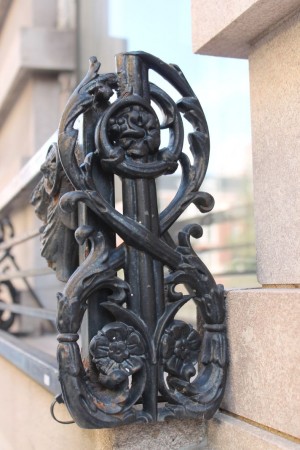
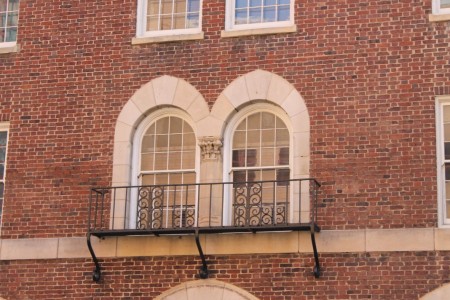
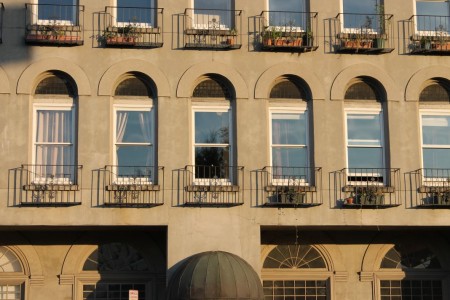
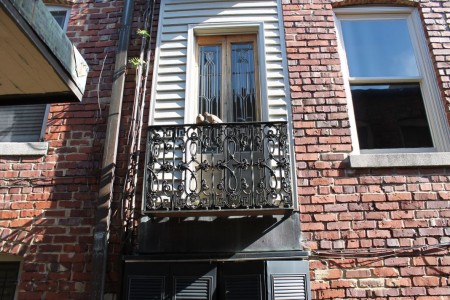
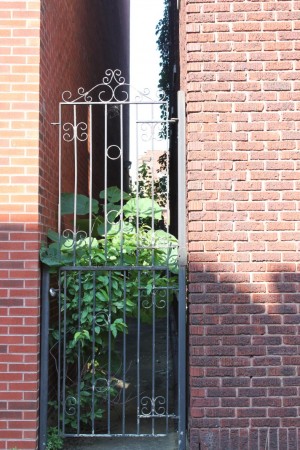
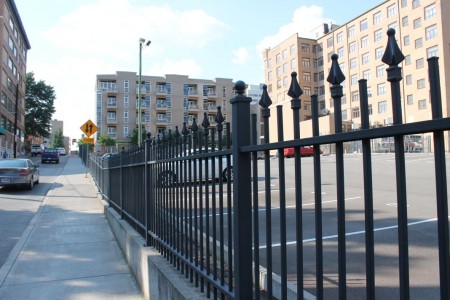
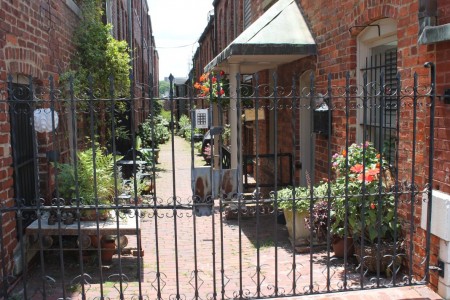
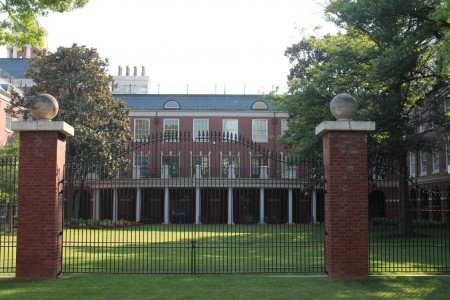
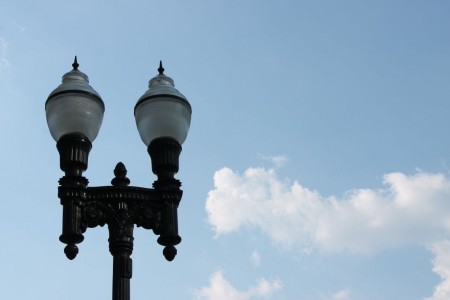
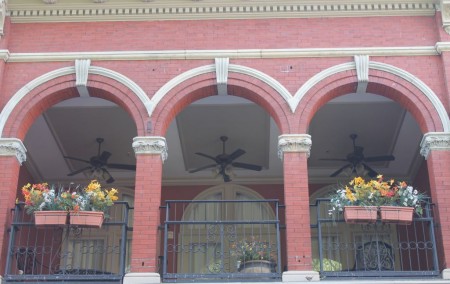
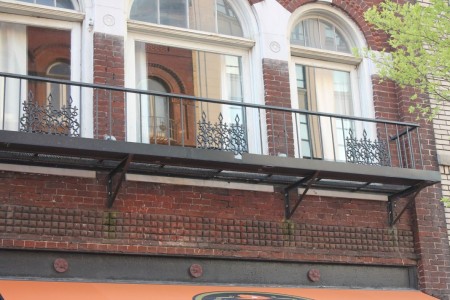
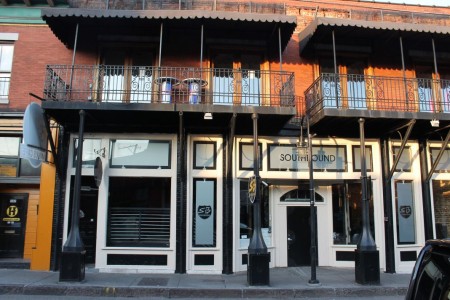
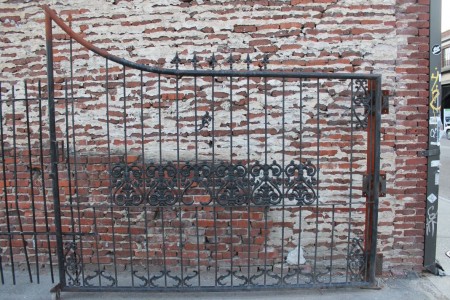

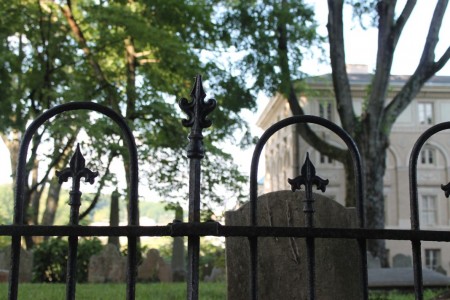
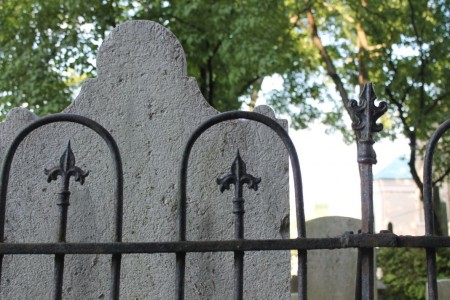
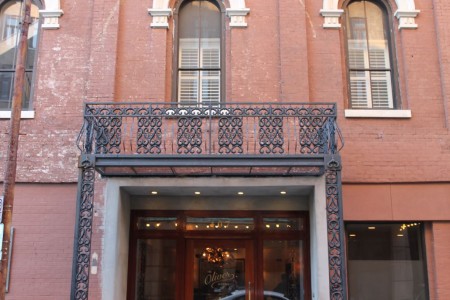
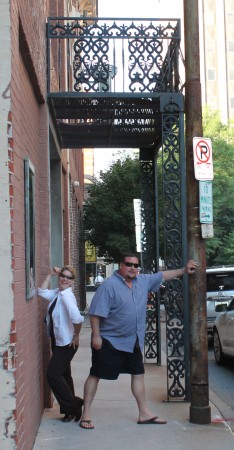
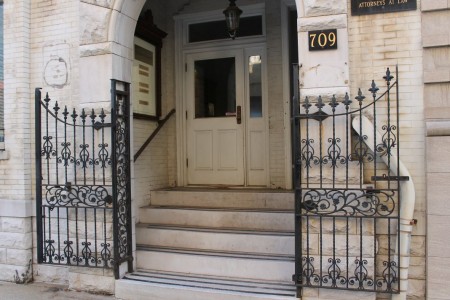

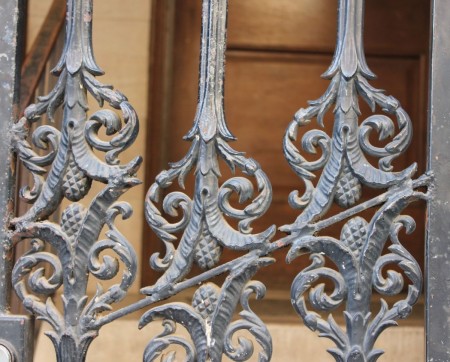

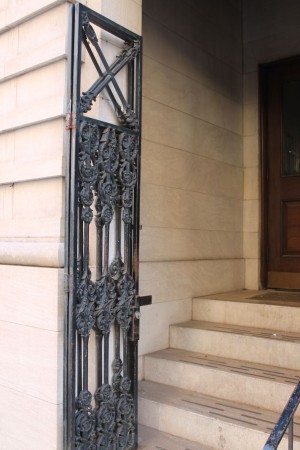
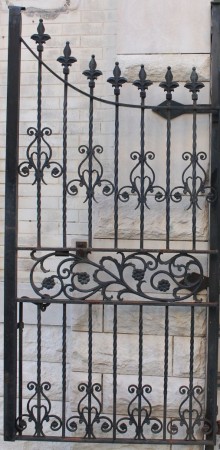

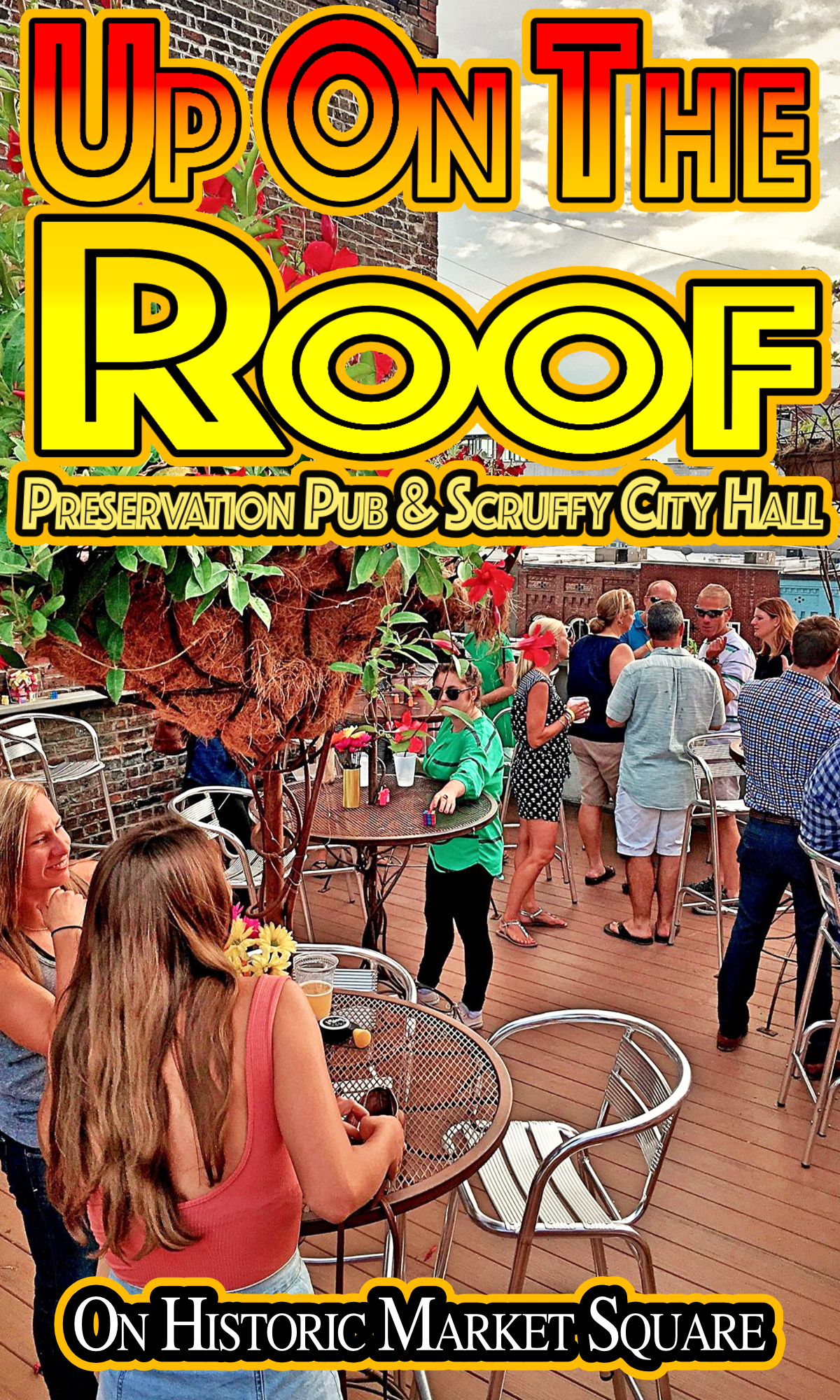


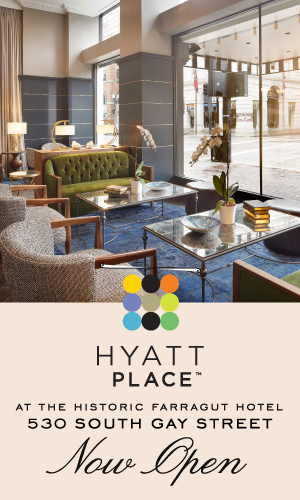


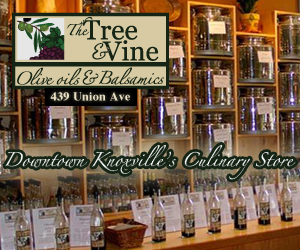


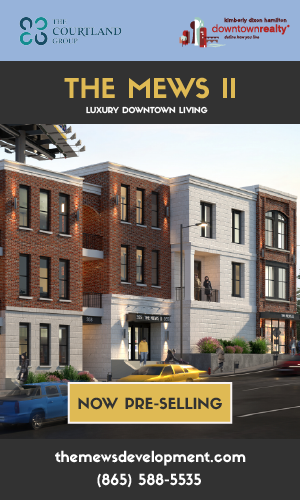







(As I think about it, decorative ironwork on Knoxville cemeteries is probably a category unto itself — National Cemetery behind Old Gray has a nice iron fence along the Cooper Street side. Also, for older versions, though I think they’re wrought iron, old Peabody School (the old AFL-CIO) has some interesting iron fire escapes.)
Security gates like those on the Market Street buildings exist in a few other places as well, though those are particularly nice examples. St. John’s Lutheran and Knoxville House of Faith (old Trinity Methodist, I think) have gates at their covered front entrances to keep people from hiding (and sleeping, I suppose) in the shadows. First Christian on Fifth Ave., St. John’s Episcopal, and Church Street UMC have ironwork to secure their courtyards (and Church Street has some more newer ornamental work for railings at the front of the building). There’s a bit as well at the courtyard around (and behind) Sterchi Oaks and The Lucerne on Fifth Ave. Bethel Confederate Cemetery still has its original iron gates, though they’re no longer functional like Old Gray’s. Also, a few residential Victorian examples still exist in North Knoxville — one on Deery St. (maybe 700 block?) and one on 900 block of Luttrell in Fourth and Gill, plus a few residual cast iron posts where the remainders of the fences no longer exist; one, somewhat inexplicably, at the corner of Baxter and Wray; and of course, Greystone on Broadway, which is a nicely decorative version.
While you’re in downtown, though, you shouldn’t forget what are probably the oldest examples, at 714 & 716 S. Gay St. The columns at the lower fronts of these buildings (pre-Civil War) are, strictly speaking, structural iron rather than decorative, but the few remaining acanthus leaves at their tops are strictly decorative cast iron, as are the odd curlicue window hoods on the upper levels of 716.
Very interesting. I’m going to have to print this out and go searching. Thanks.
Urban Guy: I think the gates of historic Old Gray Cemetery are particularly beautiful. Check them out when you can.
Thanks for the comments, everybody. It is an interesting topic and it’s fun to walk around downtown with one specific architectural feature in mind. When I do that I see things I look right through otherwise. Scruffy, thanks for the information on balconies. It makes sense. I’m not sure about the iron industry part of your conjecture. I don’t know of much iron industry in South Carolina, for example. Much of the metal in Mobile was imported from places like Philadelphia, though some of it was formed in Mobile. And I think the coast had more hardwoods than pines back in that day, though I could be wrong. Still, your point is correct given the humid, salty air, wood takes a tremendous effort to preserve.
Great pictures. Makes me want to walk around downtown again and take a closer look! And thanks for showing up some up close AND faraway shots!
More of the coastal towns and cities- Charleston, New Orleans, Mobile, Baton Rouge, were characterized because of the strong presence of the steel/iron industry in those states. Tennessee isn’t well-known for their iron-laden porches with intricate embellishments gracing their porches. Like John notes above- the more northern cities have porches/ balconies that are more characterized by wood construction with carved elements and somewhat more humble in design. This not only due to the less salt-laden atmosphere, but also we had more abundance of wood in our area than the pine-dominant coastal South.
As for the mention of non-functional balconies- if there’s a door (no matter the size of the ledge of the “balcony”) it can be considered a balcony: often referred as a “Juliet balcony”. This is where a door (or even a large window) simply opens up to a railing that resembles a full balcony. It makes for a selling point in many urban areas because sometimes code restricts how much you can build out over certain ROW’s (ie sidewalks). They still provide for a nice way to bring the outdoors in by allowing fuller access daylight, fresh air, etc than a standard window.
Good stuff as usual! You certainly come up with some great topics, and never seem to run out of interesting things to blog about.
I had those buildings on Market Street in my head when I posted yesterday, but I couldn’t find a picture to make sure I wasn’t dreaming them up. Good post! I can only speculate as to why there wasn’t much iron work in this town. I would say it was good old Appalachian practicality, but Knoxville went through a period of ostentatious decoration using masonry, stone, etc. My best guess is that the abundance and relative inexpensive nature of local lumber is probably the culprit. Those things when coupled with a climate that doesn’t cause excessive wood rot produce a city that featured less expensive ornamentation. There were many balconies and porches built in the area, but they were largely constructed from wood or masonry. I believe this is the case with most northern, southern cities (Nasvhille, Lexington, etc.).